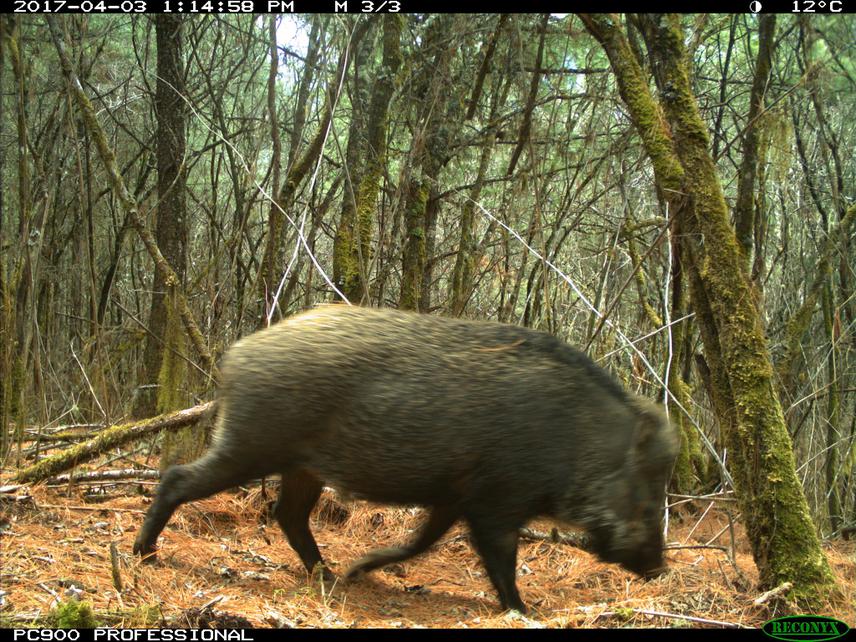Sonam Phuntsho
Understand community people’s perceptions of wildlife conservation and explore how local people could best address the emerging concerns of wildlife conservation.

Wild boar.
Bhutan has near to 700 community forests (CF) which is very encouraging considering its number and involvement of rural population. CF benefits about 33% of rural population in the country. However, current CFs’ management objectives are mostly oriented towards managing forest products with less focus on conservation of wildlife. As more and more government reserve forests (GRF) are being handed over to local community to be managed as CF, It is essential to study and understand the extent CF management that could integrate biodiversity conservation, particularly the wildlife conservation. It is high time that CF management group members understand that their roles and responsibilities are not only limited to timber and other forest products management, but also equally important for conservation of wildlife in CF.
Numerous studies carried out and reports available are on socio-economic aspects of CF in Bhutan, however, there is no or rare studies conducted in terms of biodiversity conservation in CF. Thus this proposed study is crucial and timely, and expected to generate and document three critical information essential for CF management and wildlife conservation in Bhutan:
i. the perception of people towards wildlife conservation in rural areas,
ii. the realities of wildlife presence and composition in CFs,
iii. the current system of planning and implementing conservation activities in CF.